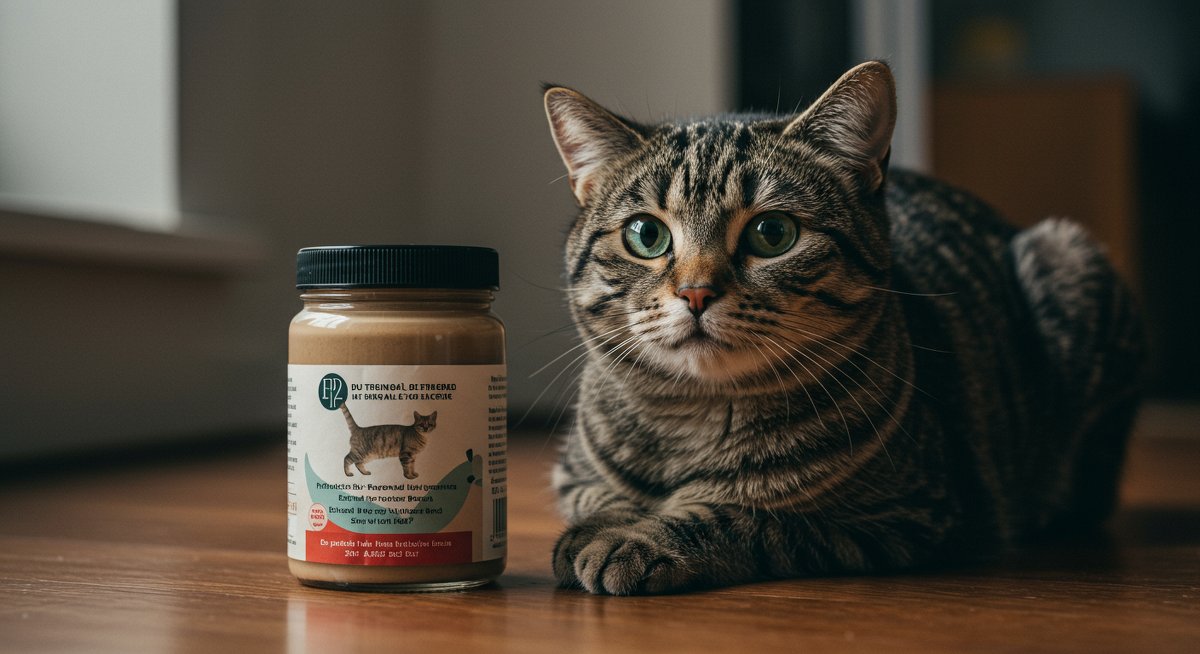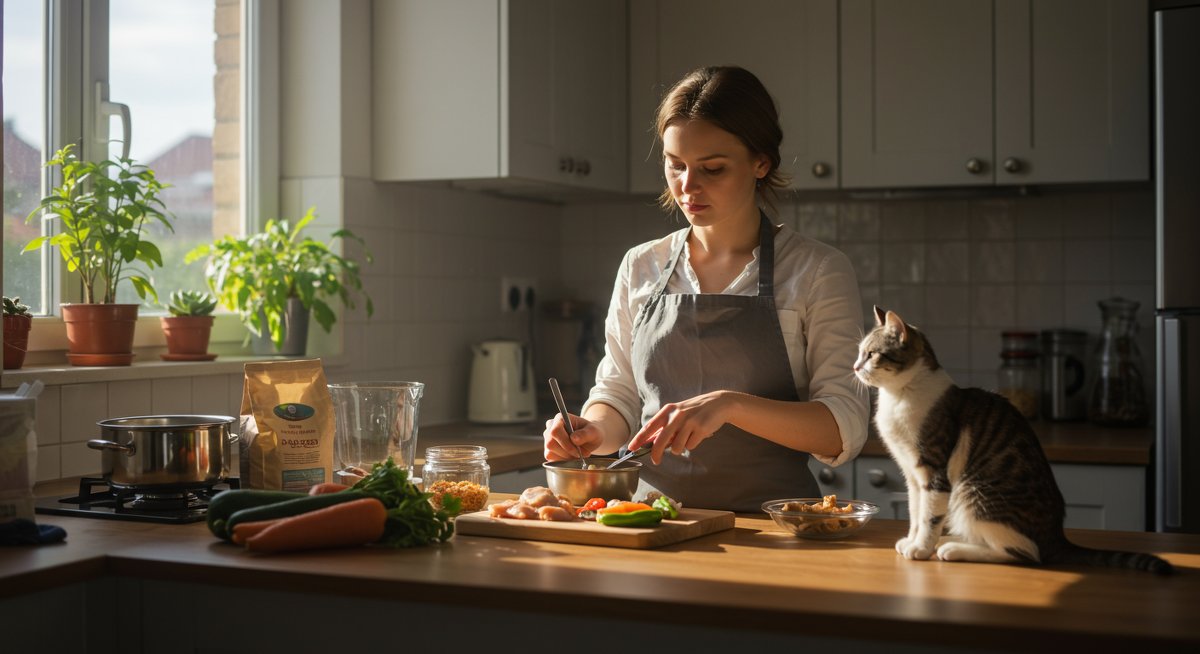As experienced pet parents, you know that your feline friends deserve the best care possible. Cat allergies can be a real challenge, leading to discomfort and frustration for both you and your beloved companion. But there’s a solution that puts you firmly in control: a homemade diet tailored to your cat's specific needs. This guide offers a deep dive into crafting delicious, allergy-friendly meals that can transform your cat's health and happiness. Let's get started!

Deep dive into cat allergies and homemade diets
Choosing to create your cat's meals from scratch is an act of love and a powerful tool in managing allergies. But, let's be honest, where do you begin? This is where knowledge and planning meet to help your cat thrive. Commercial cat foods often contain ingredients that can trigger allergic reactions. Common culprits include: beef, chicken, fish, dairy, and grains. Switching to a homemade diet lets you carefully control every ingredient, removing allergens and introducing novel proteins and limited ingredients to soothe your cat's sensitivities.
It is essential to consult with a veterinarian before making any significant dietary changes. They can help diagnose the allergies, recommend tests (such as an elimination diet), and ensure your homemade recipes meet your cat's nutritional needs. Remember, a homemade diet isn’t just about avoiding bad ingredients; it's about providing all the essential nutrients your cat needs to thrive.
For example, imagine Mittens, a beautiful Persian cat who suffered from constant skin itching and digestive issues. Her owner, Sarah, tried countless commercial foods without success. After consulting with her vet, Sarah transitioned Mittens to a homemade diet based on a novel protein source (like rabbit or venison) and a limited number of ingredients. Within weeks, Mittens' symptoms significantly improved, and she started enjoying her meals more than ever. Or consider another cat, a senior tabby named Oliver, who developed a sensitive stomach. By creating a homemade diet with easily digestible ingredients like cooked sweet potato and lean turkey, his owner was able to manage his digestive problems and improve his overall quality of life.
The key to a successful homemade diet is patience and observation. You might need to experiment with different recipes and ingredients to find what works best for your cat. Keep a detailed food journal to track what your cat eats and any changes in their health. This information will be invaluable in identifying potential allergens and fine-tuning your recipes over time. Remember, every cat is unique, and what works for one may not work for another.
Advanced strategies and insights: Crafting the perfect homemade diet
Once you've identified potential allergens with your veterinarian, the next step is to create recipes that offer complete and balanced nutrition. This means ensuring that your cat receives the right amounts of protein, fats, carbohydrates, vitamins, and minerals. This can sound complicated, but there are many resources available to help you.
Consider the case of Mr. Whiskers, a fluffy Maine Coon with a severe chicken allergy. His owner, a dedicated pet parent, worked closely with a veterinary nutritionist to create a homemade diet based on lamb and rice, supplemented with the right balance of vitamins and minerals. The transformation was remarkable – Mr. Whiskers' coat became shiny, his energy levels soared, and he stopped scratching incessantly. Also, take Luna, a sleek Siamese cat with a history of food sensitivities. Using a homemade diet, her owner was able to manage her issues by using limited ingredients. Adding in a supplement like Omega-3 Fish Oil helped give her skin and coat the support it needed, making Luna happier and more comfortable.
To create a complete and balanced diet, it’s best to follow recipes developed by veterinary nutritionists. These recipes are carefully formulated to meet your cat's specific nutritional needs. Also, keep in mind the following points:
- Protein Sources: Choose novel protein sources that your cat hasn’t been exposed to, such as rabbit, venison, or duck. Avoid common allergens like chicken, beef, and fish. Introduce one protein source at a time to identify any sensitivities.
- Carbohydrates: Use easily digestible carbs like sweet potatoes, pumpkin, or cooked rice. Avoid corn, wheat, and soy, which are common allergens and can cause digestive problems.
- Fats: Include healthy fats like flaxseed oil or fish oil, which support skin and coat health and reduce inflammation. Aim for a balanced ratio of omega-3 and omega-6 fatty acids.
- Supplements: Add vitamins and minerals to ensure your cat receives all the nutrients they need. Common supplements include taurine (essential for heart health), B vitamins, and calcium. Always consult your vet for recommendations.
Optimizing your pet's health through homemade meals
Homemade diets offer a world of possibilities for optimizing your cat’s health. You can tailor the diet to meet their specific needs, whether it's managing allergies, weight, or other health conditions. This level of personalization can be a game-changer. For instance, a cat with inflammatory bowel disease (IBD) can benefit greatly from a homemade diet with easily digestible ingredients and limited additives, helping to reduce inflammation and improve digestion. Also, the ability to control the fat content in the food can be a big help for senior cats who need to maintain a healthy weight.
Let's delve deeper:
- Weight Management: Homemade diets allow you to carefully control the calories and ingredients your cat consumes. If your cat needs to lose weight, you can create recipes with lower fat content and higher fiber to promote satiety. A cat named Patches, who was overweight, lost a significant amount of weight and improved her mobility after switching to a homemade diet with portion control and lean protein.
- Managing Diabetes: Cats with diabetes require a diet that is low in carbohydrates and high in protein. A homemade diet allows you to control the carbohydrate intake precisely, which can help regulate blood sugar levels. In the case of Midnight, a diabetic cat, a homemade diet stabilized his blood sugar, reducing his reliance on insulin and improving his overall quality of life.
- Supporting Kidney Health: Cats with kidney disease often need a diet that is low in phosphorus and protein. A homemade diet allows you to carefully control the phosphorus and protein content, which can help slow the progression of kidney disease. For a cat named Smokey with kidney issues, a homemade diet helped manage his condition, improving his appetite and energy levels.

Integrating advanced care practices: Recipes and practical guidance
Creating your own cat food can seem intimidating at first, but with the right approach, it can become a rewarding experience. Start with a simple recipe and gradually adjust it to your cat's needs. One of the easiest beginner-friendly recipes is based on a single protein source (like turkey) and a complex carbohydrate (like sweet potato).
Here's a basic recipe:
- 1 cup cooked turkey breast, diced
- 1/2 cup cooked sweet potato, mashed
- 1 tablespoon flaxseed oil
- 1/4 teaspoon taurine
Instructions:
- Combine all ingredients in a bowl.
- Mix well.
- Divide into portions and store in the refrigerator or freezer.
Always ensure that any raw ingredients are thoroughly cooked to eliminate bacteria. For example, the safe cooking temperature for chicken is 165°F (74°C). Using a meat thermometer is a great way to measure temperature. Consider using a slow cooker to make big batches of your cat’s meals to save time. The key is to make sure every meal is not only safe but also meets your cat's nutritional requirements.
To make things easier, use a kitchen scale to measure ingredients accurately. This helps you ensure consistency and precise portioning. To save time, prepare meals in batches. Cook a large batch of protein and carbohydrates, then divide them into individual portions for the week. If you are not sure about measuring supplements, consult with your vet. They can give you specific instructions and ensure that your cat gets the right amount of nutrients.
Long-term wellness & longevity tips
Maintaining a homemade diet requires continuous monitoring and adjustments. Your cat's needs may change over time due to age, activity level, or health conditions. Regular check-ups with your veterinarian are essential to monitor your cat's health and make any necessary dietary changes. Always be ready to adjust your recipes based on your cat's response to the food. Keep a detailed record of the ingredients, portion sizes, and any observed changes in your cat's health.
- Hydration is Key: Ensure your cat always has access to fresh water. Consider adding extra water to your homemade meals or offering a separate water fountain to encourage drinking.
- Portion Control: Feed your cat the correct amount of food based on their weight, activity level, and health needs. Overfeeding can lead to weight gain and other health problems. The average cat needs about 200-250 calories daily, but this may vary. Consult with your vet to determine the right amount for your cat.
- Environmental Enrichment: Provide a stimulating environment for your cat with plenty of toys, scratching posts, and opportunities for play. Mental stimulation helps prevent boredom and stress, which can sometimes trigger allergic reactions.
Expert-level pet care insights: Addressing common challenges
Even with the best intentions, you may encounter some challenges. One common issue is getting your cat to accept the new diet. Some cats are picky eaters, so it’s essential to be patient. Start by gradually mixing the homemade food with your cat’s current food, slowly increasing the proportion of homemade food over time. Consider warming the food slightly to enhance its aroma and make it more appealing. If your cat still resists, try different protein sources or recipes.
Another challenge is ensuring that your cat receives all the necessary nutrients. It's essential to consult with a veterinary nutritionist to ensure your recipes are complete and balanced. Consider supplementing with Omega-3 Fish Oil, which has great benefits for skin and coat. When creating a homemade diet, measuring ingredients properly can make a big difference. Using a digital kitchen scale and measuring cups ensures consistent portioning and that your cat receives the correct amounts of nutrients. If you're unsure about the right amounts, it's always best to consult a veterinary nutritionist for guidance.
Next steps in your pet parenthood journey
Managing your cat's allergies through a homemade diet is a significant step towards enhancing their well-being. Remember, it's a journey that requires dedication, patience, and a willingness to learn. If you're on this journey too, I’d love to hear how it goes for you. Always keep in touch with your vet for help, and your cat will soon be feeling healthier and happier. You've got this!